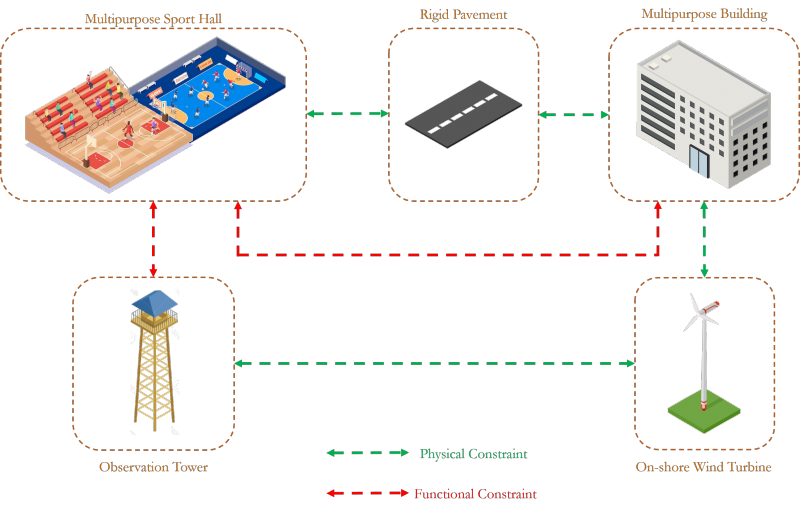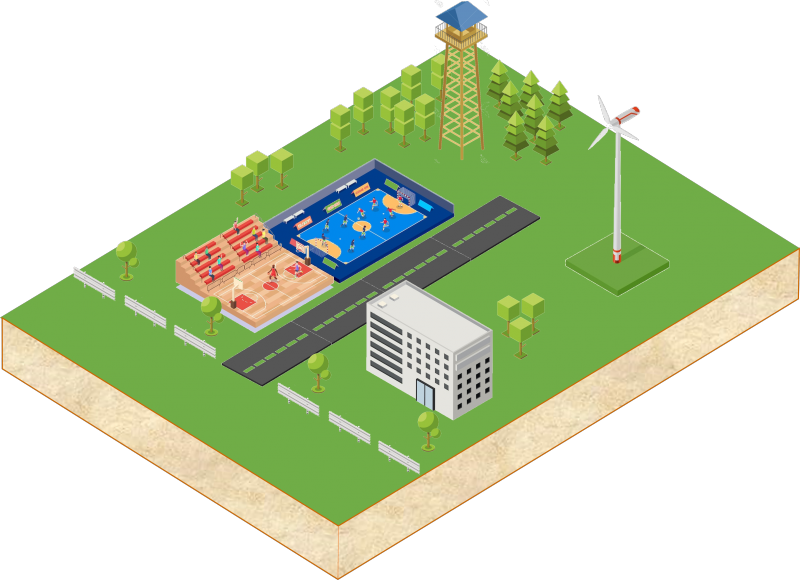Within the individual civil systems in our group, three of them have a very specific use: Sports Hall, Observation Tower and Wind Turbine. The integration challenge needs therefore to consider a sports function, a tourism attraction and energy generation. To that, Rigid Pavements and a Villa need to be integrated.
Background research showed that such integration was, in part, already designed. Urban parks such as the Olympiapark in Munich (Fig. 1) or the Olympic Forest Park in Beijing are global examples of the effort to combine sport, leisure, and green surfaces in cities. Those parks already possess sports installations, observation towers and roads.

In comparison to such parks, there is still the need to integrate the Townhouse Villa and the Wind Turbine. In that sense, it was decided to re-purpose the Townhouse Villa building as a Multipurpose Building for athletes and administration and consider one Wind Turbine at the limits of the park, for generating renewable energy.
Regarding the functions of the systems, the Observation Tower and Sports Hall have a similar function: they’re designed for temporarily hosting the public. The public comes to support sports events in the Sports Hall, while others enjoy the observation tower and the green area of the urban park. To some extent, the Multipurpose Building also fulfils the function of hosting athletes, who use the Sports Hall as a training center.
The other systems are related to each other given physical constraints, as the pavement is placed between the two buildings (Sports Hall and Multipurpose Building) and leads to the Observation Tower. Meanwhile, the location of the Observation Tower and Wind Turbine obeys a minimum distance requirement for its position regarding the public buildings.
An illustration of the described constraints, in the context of an integrated system, is presented in Fig. 2.

Our final integrated system, a Sports Park, provides a well-defined function for the sport-related population (housing and facilities), for the main public (leisure) and the environment. After all, the wind turbine is a source of renewable energy and the green surface supports biodiversity and helps tackle urban heat islands.
The Sports Park as a ‘system of systems’ is illustrated in Figure 3.

← Individual Systems | Combined Ontology →